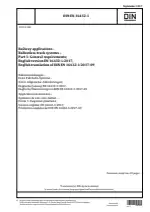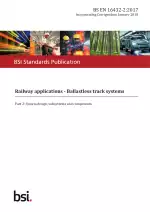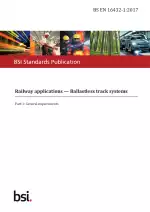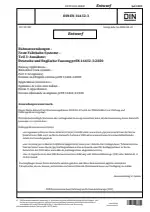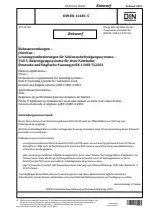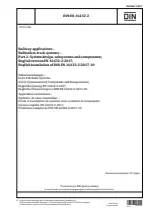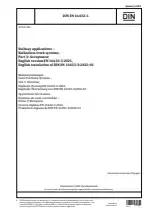Railway Applications - Ballastless Track Systems - Part 1: General Requirements
Also Known As:
The DIN EN 16432-1 standard provides a set of guidelines for the design of ballastless track systems in railway applications. This standard applies to all railway applications with axle loads of up to 250 kN.
The standard specifically focuses on the design of various elements of the ballastless track system, including plain line track, switches and crossings, rail expansion joints, substructures such as embankments, cuttings, tunnels, bridges, and floating slabs. It also covers transitions between different substructures and different ballastless track systems, as well as transitions between ballasted and ballastless track systems.
However, it is important to note that this standard does not provide requirements for inspecting, maintaining, repairing, and replacing ballastless track systems during operation. These activities are addressed by other standards. The characterization of substructures is included in this standard, but the design of substructures is covered by separate European Standards such as EN 1992-2 and EN 1997-1.
| Descriptors | Acceptance (approval), Carriageways, Definitions, Environmental condition, Environmental conditions, Environmental effects, Fixed, Interfaces of electrical connections, Live loading, Permanent ways, Plates, Properties, Rail fastening systems, Rails, Railway applications, Railway construction, Railway installations, Railway track, Railway vehicles, Railways, Specification (approval), Stress, Substructures, Track area, Tracks (materials handling equipment), Travel ways, Firm, Planks, Loading, Sheets, Pavements (roads), Panels, Tiles, Roadways, Solid, Superstructure, Boards |
| ICS Codes | 93.100 - Construction of railways |
| Language(s) | English |
| File Size | 1.1 MB |

